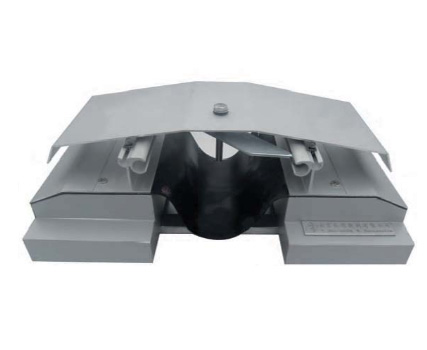 Welcome to our blog dedicated to discussing the pivotal role of expansion joint system in the realm of expanded metal manufacturing. In this post, we’ll delve into the significance of expansion joints, their applications, and address some common queries related to their installation and functionality.
Welcome to our blog dedicated to discussing the pivotal role of expansion joint system in the realm of expanded metal manufacturing. In this post, we’ll delve into the significance of expansion joints, their applications, and address some common queries related to their installation and functionality.
Expansion Joints: Reinforcing Structural Stability
Expansion joint systems play a critical role in the integrity and longevity of structures made from expanded metal. These joints facilitate movement, accommodating thermal expansion, contraction, vibration, and seismic activity, thereby preventing damage to the structure.
Applications of Expansion Joints in Expanded Metal Factories
- Industrial Flooring: In factories where heavy machinery operates, expansion joints in the flooring prevent cracks and fractures caused by constant vibration and movement.
- Roofing Structures: Expansion joints are vital components in roofing systems, allowing the roof to expand and contract with temperature changes without compromising its integrity.
- Facade Cladding: For buildings clad with expanded metal, expansion joints prevent stress buildup due to temperature differentials, ensuring the facade remains structurally sound.
- Bridge Construction: In bridges constructed with expanded metal decks, expansion joints accommodate the movement caused by vehicle traffic and temperature fluctuations, extending the lifespan of the bridge.
FAQs (Frequently Asked Questions)
Q: What materials are expansion joints typically made from?
A: Expansion joints are commonly constructed from materials such as rubber, neoprene, metal, and elastomers, chosen for their durability and ability to withstand various environmental conditions.
Q: How often should expansion joints be inspected?
A: Regular inspections are crucial to ensure expansion joints are functioning effectively. The frequency of inspections depends on factors such as the type of structure, its location, and the prevailing environmental conditions. However, a general recommendation is to inspect expansion joints at least annually.
Q: Can expansion joints be installed in existing structures?
A: Yes, expansion joints can be retrofitted into existing structures to address issues such as cracking, movement, and structural instability. However, the feasibility of installation depends on factors such as the condition of the structure and the availability of space for accommodating the expansion joint.
Q: How do expansion joints contribute to safety in industrial environments?
A: Expansion joints help mitigate safety risks by preventing structural damage that could lead to accidents or failures. By accommodating movement and reducing stress on the structure, expansion joints contribute to the overall safety and reliability of industrial facilities.
Q: Are there different types of expansion joints available for specific applications?
A: Yes, there are various types of expansion joints designed to suit specific applications and environmental conditions. These include modular expansion joints, strip seals, compression seals, and sliding plate joints, among others. The selection of the appropriate type depends on factors such as the anticipated movement, load requirements, and installation constraints.
We hope this blog has provided valuable insights into the importance of expansion joint systems in expanded metal manufacturing. For further inquiries or assistance regarding expansion joints for your specific application, feel free to reach out to us. Stay tuned for more informative content on expanded metal and its myriad applications!

